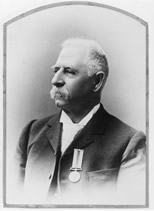134 Amendments after disagreement
Where the House of Representatives has disagreed with amendments made by the Senate in a bill first passed by the House, an amendment may not be proposed in any words of the bill which, having received the concurrence of the House of Representatives, have not been the subject of, or immediately affected by, some previous amendment, unless the proposed amendment is consequent on an amendment already agreed to or made by the Senate.
Amendment history
Adopted: 19 August 1903 as SO 233 but renumbered as SO 232 for the first printed edition
1989 revision: Old SO 241 renumbered as SO 134; language streamlined; qualification added to clarify its application to end-stage negotiations on House-initiated bills (as distinct from SO 126(3) applying to Senate-initiated bills)
Commentary
Standing order 134 was the subject of extensive debate in 1903 as senators grappled with the threshold question of whether it was necessary at all, given that it reflected universal practice and whether a particular amendment was in order at any stage might be left to the decision of the Senate or ruling by the President in particular cases. Responding to the suggestion that it could simply be left to practice, Senator Drake (Prot, Qld) retorted:
Is it not better to have the practice embodied in a standing order than to have long discussions and repeated references to May?[1]
President Baker clearly agreed:
The object of standing orders is to facilitate business, and save time by preventing discussions at every stage as to what the procedure shall be, and the bonds are not very heavy, seeing that the standing orders may, at any time, be suspended.[2]
The rationale of this particular standing order, according to President Baker, was to provide rules for the final stages of negotiations between the Houses on amendments to bills:
It is the universal practice that there must be some finality about Bills. One House passes a Bill, and the other House amends the Bill and passes its third reading, so that it has been passed by both Houses except as to certain matters which are in dispute, and on which further proceedings take place. … But there must come a time when only certain matters are open, and when those matters must be agreed to by both Houses or the Bill must be lost.[3]

Senator James Drake (Prot, Qld)(Source: National Library of Australia)
Secondary issues were whether it applied to all bills or only to bills received from the House of Representatives, and whether it was in conflict with SO 126(3) which applies only to Senate-initiated bills. During the debate on 11 June 1903, President Baker revealed that it had been drafted by Blackmore with his lower House colleague in South Australia for the use of the House of Assembly, and that the Standing Orders Committee had not altered it in any way. It was a standing order intended to deal with the final stages of amendments between the Houses.[4] Senators had difficulty understanding its purpose and its relationship to SO 126(3) and the matter was postponed.
Over July 1903, the Standing Orders Committee reconsidered standing orders which had been postponed and reported on these and some other matters in its Second Report on Proposed Standing Orders, tabled on 23 July 1903.[5] The committee recommended that this standing order remain as originally proposed and it was agreed to without further debate on 12 August 1903.[6]
The potential confusion remained unresolved. Edwards reported in the 1938 MS that no occasion had arisen “where any action has been attempted which would involve a ruling under this Standing Order”. Odgers, however, taking the more expansive view, considered that the standing order applied to all bills.[7]

E.G. Blackmore, Clerk of the Senate 1901 08 and formerly Clerk of the South Australian House of Assembly (Source: National Library of Australia)
When revising the standing orders in 1988–89, Harry Evans took the opportunity to propose a clarification and words were added at the beginning of the standing order to restrict its application to negotiations on a bill initiated in the House, where the House disagreed to amendments made by the Senate. A supplementary explanatory memorandum, tabled in the Senate on 8 May 1990,[8] the first sitting day on which the new standing orders were in operation, explained the clarification as follows:
When the standing order was adopted in 1903 it was the subject of somewhat heated debate. There was confusion as to whether the standing order applied to all bills or only to bills received from the House of Representatives, and it was contended that the standing order overlapped, and was in conflict with, old standing order 224, which now appears as new standing order 126(3), and which applies to bills originated in the Senate and amended by the House.
In revising the standing orders, it was thought best to redraft old standing order 241 (new standing order 134) so that it explicitly applies only to bills received from the House of Representatives, and to leave old standing order 224 (new standing order 126(3)) to achieve the intended purpose in relation to bills originated in the Senate.
Because of the different wording and position of the two provisions, the end result may be that, where there has been disagreement between the Houses over previous amendments, the Senate has slightly more latitude in proposing further amendments to bills originated in the Senate than it has in proposing further amendments to bills received from the House of Representatives, but that is thought to be quite appropriate.
The “slightly more latitude” referred to in SO 126(3) allows the Senate to make further amendments to a Senate bill that are “relevant to, or consequent upon, the acceptance, amendment or rejection of a House of Representatives amendment”. The corresponding provision in SO 134 excludes from further amendment “any words of the bill which, having received the concurrence of the House of Representatives, have not been the subject of, or immediately affected by, some previous amendment, unless the proposed amendment is consequent on an amendment already agreed to or made by the Senate”.